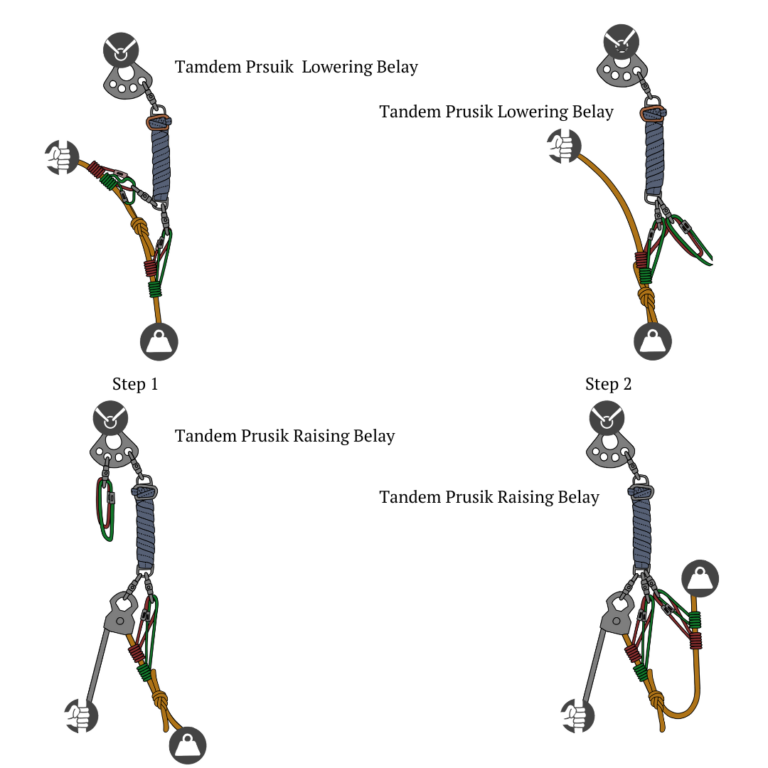Mastering the Tandem Prusik Belay System for Rope Rescue Operations
The Mastering the Tandem Prusik Belay System stands as a cornerstone of rope rescue operations, providing unmatched safety and efficiency during both raising and lowering scenarios. Its ability to manage knots while maintaining continuous belay protection makes it an indispensable tool for rescue teams. In this guide, we’ll walk you through the step-by-step implementation of the Tandem Prusik Belay system, highlight its benefits, and discuss key considerations to ensure success in your rescue missions.
How to Pass a Knot with the Tandem Prusik Belay System
Step 1: Setup for Knot Passage
- Prepare the Second Set of Prusik Loops:
As the knot approaches the initial Prusik hitches, tie a second set of Prusik loops on the opposite side of the knot. - Attach to the Load:
Secure these loops to the load using a load release strap and connect with a second carabiner. - Maintain Continuous Belay:
This setup ensures uninterrupted belay protection as the knot reaches the transition point.
Step 2: Transition the Belay
- Shift the Load to the New Prusik Set:
Once the new tandem Prusik loops are securely in place, transfer the load by removing the first set of Prusik hitches. - Reposition the Pulley System:
In a raising operation, leave sufficient space between the knot and the new hitches to smoothly pass the pulley system. - Resume Operation:
With the knot successfully transitioned through the belay point, continue raising or lowering the load seamlessly.
Benefits of the Tandem Prusik Belay System
- Continuous Safety:
The system ensures uninterrupted belay protection, a critical factor when managing knots in high-stakes rescue operations. - Versatility:
Adaptable for both raising and lowering operations, the Tandem Prusik Belay is a go-to solution for complex rope systems. - Enhanced Control:
The tandem Prusik loops offer precise control over the load, reducing risks and increasing operational flexibility.
Key Considerations
- Proper Training:
Mastery of the Tandem Prusik Belay system requires dedicated training to ensure safe and effective application. - Equipment Maintenance:
Regularly inspect Prusik loops, carabiners, and associated gear for wear and tear to guarantee reliability during operations. - Scenario Practice:
Conduct scenario-based training to simulate real-world conditions, preparing teams for complex transitions and knot management.
Final Thoughts
The Tandem Prusik Belay system is more than just a technique—it’s a vital safeguard in rope rescue operations. By mastering this system, rescue teams can navigate the complexities of knot passing with confidence and precision, enhancing both safety and efficiency. Whether managing high-angle rescues or intricate rigging challenges, the Tandem Prusik Belay system proves to be an indispensable tool for professionals committed to excellence in the field.
Reference Links
- Comprehensive Guide to Knot Passing in Rigging Systems
- Safety Standards for Rope Rescue Operations
- Advanced Prusik Techniques for High-Angle Rescues
- Best Practices for High-Angle Rescue Teams
Peace on your Days
Lance









